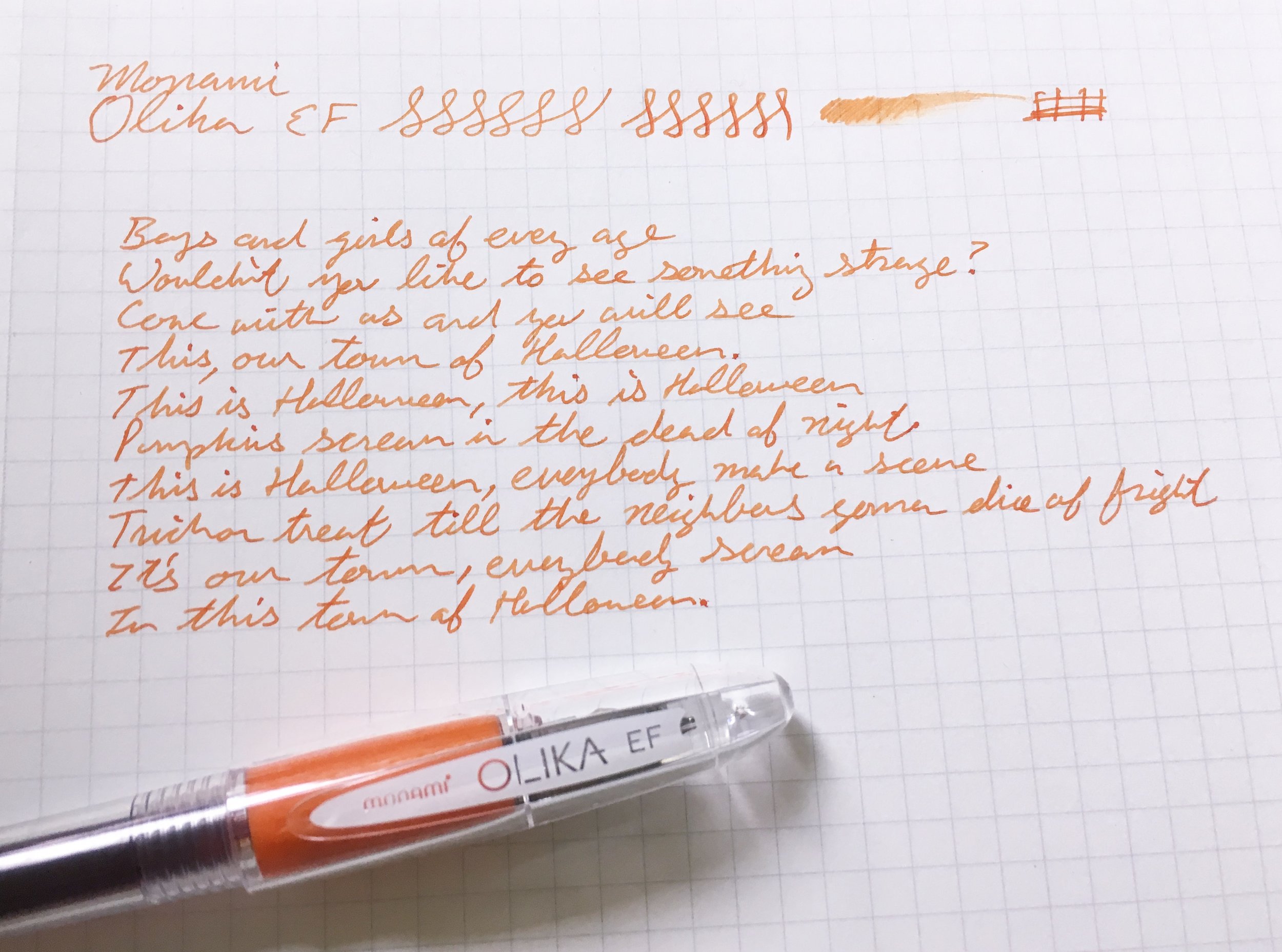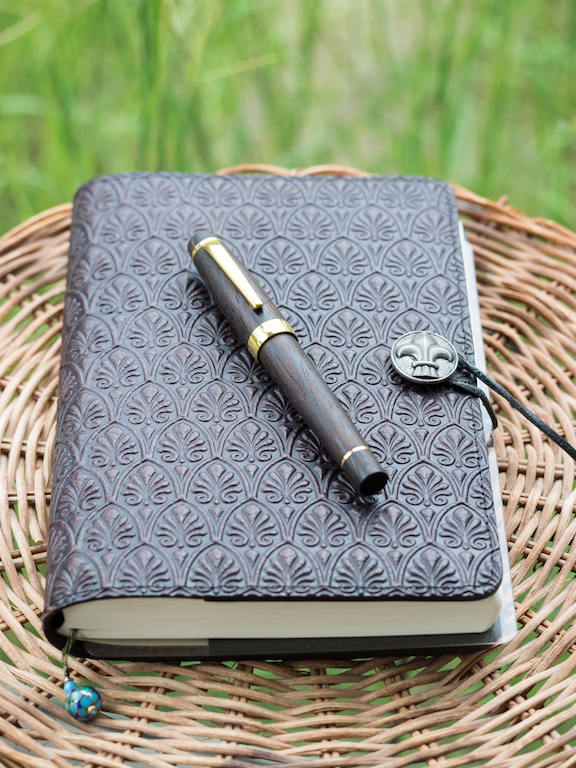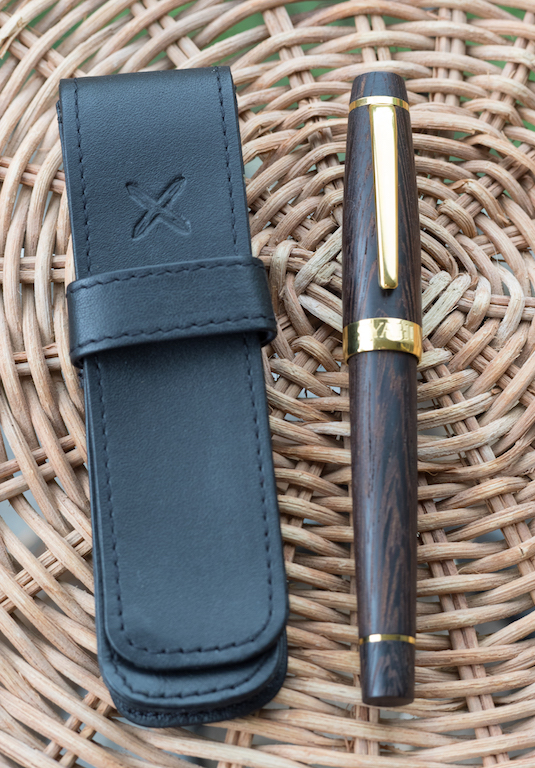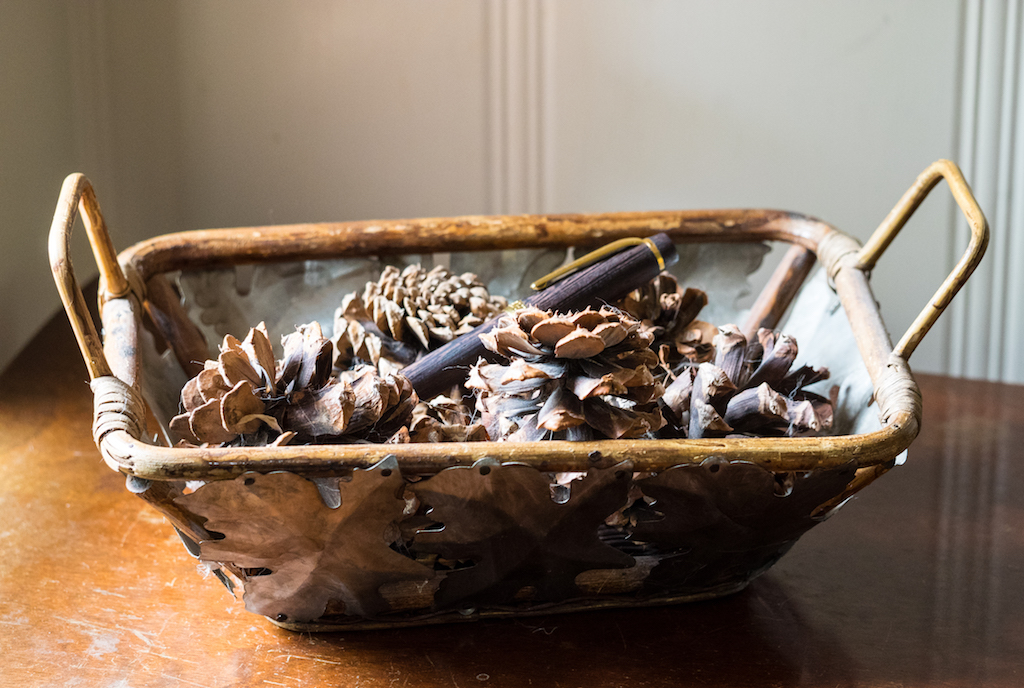(Sarah Read is an author, editor, yarn artist, and pen/paper/ink addict. You can find more about her at her website and on Twitter.)
Where were pens like this when I was still in school? I had to hunt for affordable fountain pens back then and most of what I found wasn't nearly this nice or fun.
At first glance, it looks like just another cheap "I only use this in contexts where I'd worry about my nicer pens" pen. And it is indeed perfect for those situations! But the more I play with it, the more I like about it.
The body is clear PVC, so you can easily see your ink level. The grip is textured rubber like you'd find on a lot of big-box gel or rollerball pens. It's easy to grip and comfortable to hold. It does feel a bit large for my hand, but it's so light that it's still easy to write with even for long periods of time. The whole thing looks like a plain inexpensive office pen--which sounds like an insult, but think of it as protective coloration. I can leave it on my desk in the middle of a public library and walk away, and it will still be there when I come back.
The cap snaps to close and it posts securely on the back of the pen. The clip is wide and flexible, but feels very flimsy--like it's going to break off the first time I try and clip it to too many pages or if I put it in my purse wrong. Weak clips are one of my biggest pen pet peeves. Fortunately, the pen writes well enough to make up for this offense.
The EF nib is surprisingly smooth on this pen. It writes with even the lightest pressure and lays down a wet enough line that it shows off some great character in the provided ink. Reports from the wild indicate some inconsistencies in their nib quality, but that's not surprising at this price point. Most seem to be of the excellent quality I'm experiencing with mine.
The nib is steel, and it's fed by a wick rather than a plastic feed. I worried this would cause some problems with drying out or ink starvation, but I haven't had any trouble. It does mean, though, that it's a pain if you want to switch colors--because you'll need to rinse all of the ink out of that wick. It would probably be more sensible to keep a dedicated color for each of the pans, and just collect all of the 20 different colors.
Each pen comes with three ink cartridges, and there are refills available. It also accepts Lamy cartridges, if you do decide you want a change. I also noticed that these cartridges are more rugged than the ones I've seen before, They are made of hard plastic like the pen, not the flexible plastic of most cartridges. It does mean that you can't squeeze ink through if the nib gets too dry, but they look sturdy enough that they could be refilled with a syringe and used many times over.
The Olika ink that came in the cartridges was a very pleasant surprise. The color is rich with beautiful shading and it behaves very well. I'll definitely be eyeing some other colors of both the pens and ink. The ink alone is worth the $5.50, and the pen is an added delight.
(JetPens provided this product at no charge to The Pen Addict for review purposes.)
Enjoy reading The Pen Addict? Then consider becoming a member to receive additional weekly content, giveaways, and discounts in The Pen Addict shop. Plus, you support me and the site directly, for which I am very grateful.
Membership starts at just $5/month, with a discounted annual option available. To find out more about membership click here and join us!
































